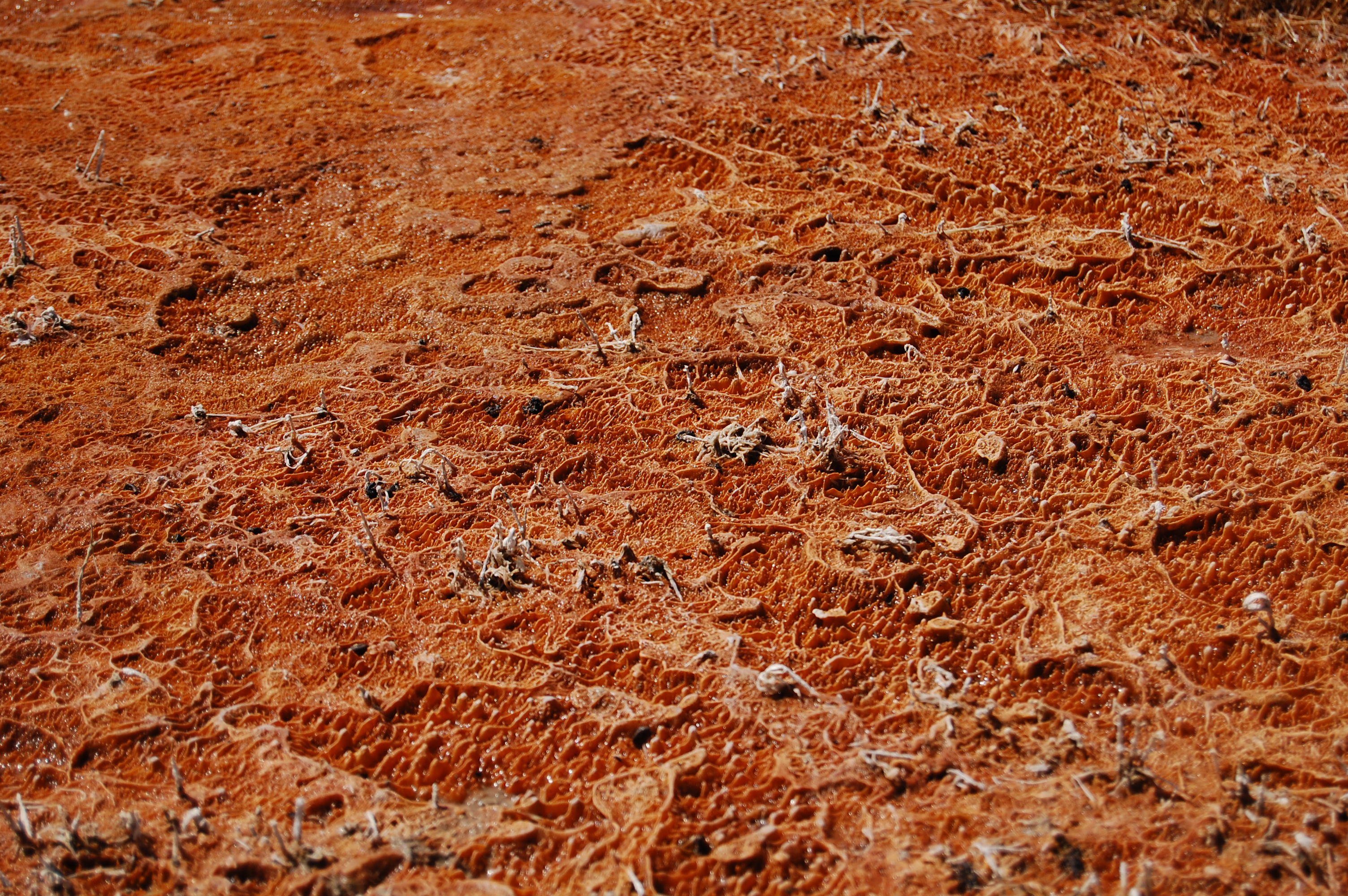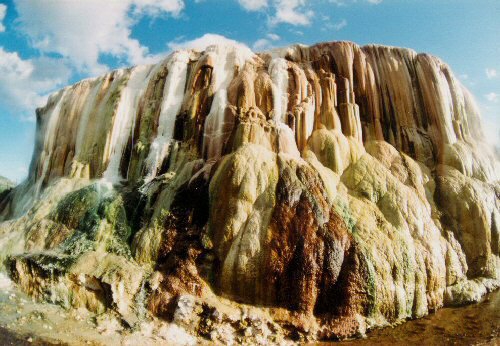|
Methanothermobacter Marburgensis
''Methanothermobacter marburgensis'' is a thermophilic and obligately autotrophic methanogenic archaeon. The type strain MarburgT was isolated from sewage sludge in the vicinity of the city Marburg, Germany. It was also detected in hot springs. It grows in the temperature between 45 and 70 °C with optimum at 65 °C thus it is classified as thermophile. Cells are rods with length 3–3.5 μm and 0.3–0.4 μm wide, Gram-positive and non-motile. Its genome has been sequenced. They reduce carbon dioxide with hydrogen Hydrogen is a chemical element; it has chemical symbol, symbol H and atomic number 1. It is the lightest and abundance of the chemical elements, most abundant chemical element in the universe, constituting about 75% of all baryon, normal matter ... into methane as the only pathway for ATP production. It does not require any organic supplements and it grows on mineral media with CO2 as a carbon source, H2 as a source of electrons, NH3 as a nitrogen source, ... [...More Info...] [...Related Items...] OR: [Wikipedia] [Google] [Baidu] |
Thermophilic
A thermophile is a type of extremophile that thrives at relatively high temperatures, between . Many thermophiles are archaea, though some of them are bacteria and fungi. Thermophilic eubacteria are suggested to have been among the earliest bacteria. Thermophiles are found in geothermally heated regions of the Earth, such as hot springs like those in Yellowstone National Park and deep sea hydrothermal vents, as well as decaying plant matter, such as peat bogs and compost. They can survive at high temperatures, whereas other bacteria or archaea would be damaged and sometimes killed if exposed to the same temperatures. The enzymes in thermophiles function at high temperatures. Some of these enzymes are used in molecular biology, for example the ''Taq'' polymerase used in PCR. "Thermophile" is derived from the (''thermotita''), meaning heat, and (''philia''), love. Comparative surveys suggest that thermophile diversity is principally driven by pH, not temperature. Clas ... [...More Info...] [...Related Items...] OR: [Wikipedia] [Google] [Baidu] |
Autotrophic
An autotroph is an organism that can convert abiotic sources of energy into energy stored in organic compounds, which can be used by other organisms. Autotrophs produce complex organic compounds (such as carbohydrates, fats, and proteins) using carbon from simple substances such as carbon dioxide,Morris, J. et al. (2019). "Biology: How Life Works", 3rd edition, W. H. Freeman. generally using energy from light or inorganic chemical reactions. Autotrophs do not need a living source of carbon or energy and are the producers in a food chain, such as plants on land or algae in water. Autotrophs can reduce carbon dioxide to make organic compounds for biosynthesis and as stored chemical fuel. Most autotrophs use water as the reducing agent, but some can use other hydrogen compounds such as hydrogen sulfide. The primary producers can convert the energy in the light ( phototroph and photoautotroph) or the energy in inorganic chemical compounds (chemotrophs or chemolithotrophs) ... [...More Info...] [...Related Items...] OR: [Wikipedia] [Google] [Baidu] |
Methanogen
Methanogens are anaerobic archaea that produce methane as a byproduct of their energy metabolism, i.e., catabolism. Methane production, or methanogenesis, is the only biochemical pathway for Adenosine triphosphate, ATP generation in methanogens. All known methanogens belong exclusively to the Domain (biology), domain Archaea, although some bacteria, plants, and animal cells are also known to produce methane. However, the biochemical pathway for methane production in these organisms differs from that in methanogens and does not contribute to ATP formation. Methanogens belong to various Phylum, phyla within the domain Archaea. Previous studies placed all known methanogens into the superphylum Euryarchaeota. However, recent phylogenomic data have led to their reclassification into several different phyla. Methanogens are common in various anoxic environments, such as marine and freshwater sediments, wetlands, the Gastrointestinal tract, digestive tracts of animals, wastewater treatment ... [...More Info...] [...Related Items...] OR: [Wikipedia] [Google] [Baidu] |
Wastewater
Wastewater (or waste water) is water generated after the use of freshwater, raw water, drinking water or saline water in a variety of deliberate applications or processes. Another definition of wastewater is "Used water from any combination of domestic, industrial, commercial or agricultural activities, surface runoff / storm water, and any sewer inflow or sewer infiltration". In everyday usage, wastewater is commonly a synonym for sewage (also called domestic wastewater or municipal wastewater), which is wastewater that is produced by a community of people. As a generic term, wastewater may also describe water containing contaminants accumulated in other settings, such as: * Industrial wastewater: waterborne waste generated from a variety of industrial processes, such as manufacturing operations, mineral extraction, power generation, or water and wastewater treatment. * Cooling water, is released with potential thermal pollution after use to condense steam or reduce machinery ... [...More Info...] [...Related Items...] OR: [Wikipedia] [Google] [Baidu] |
Hot Spring
A hot spring, hydrothermal spring, or geothermal spring is a Spring (hydrology), spring produced by the emergence of Geothermal activity, geothermally heated groundwater onto the surface of the Earth. The groundwater is heated either by shallow bodies of magma (molten rock) or by circulation through fault (geology), faults to hot rock deep in the Earth's crust. Hot spring water often contains large amounts of dissolved minerals. The chemistry of hot springs ranges from acid sulfate springs with a pH as low as 0.8, to alkaline chloride springs saturated with silica, to bicarbonate springs saturated with carbon dioxide and carbonate minerals. Some springs also contain abundant dissolved iron. The minerals brought to the surface in hot springs often feed communities of extremophiles, microorganisms adapted to extreme conditions, and it is possible that life on Earth had its origin in hot springs. Humans have made use of hot springs for bathing, relaxation, or medical therapy for th ... [...More Info...] [...Related Items...] OR: [Wikipedia] [Google] [Baidu] |
Thermophile
A thermophile is a type of extremophile that thrives at relatively high temperatures, between . Many thermophiles are archaea, though some of them are bacteria and fungi. Thermophilic eubacteria are suggested to have been among the earliest bacteria. Thermophiles are found in geothermally heated regions of the Earth, such as hot springs like those in Yellowstone National Park and deep sea hydrothermal vents, as well as decaying plant matter, such as peat bogs and compost. They can survive at high temperatures, whereas other bacteria or archaea would be damaged and sometimes killed if exposed to the same temperatures. The enzymes in thermophiles function at high temperatures. Some of these enzymes are used in molecular biology, for example the ''Taq'' polymerase used in PCR. "Thermophile" is derived from the (''thermotita''), meaning heat, and (''philia''), love. Comparative surveys suggest that thermophile diversity is principally driven by pH, not temperature. Classificat ... [...More Info...] [...Related Items...] OR: [Wikipedia] [Google] [Baidu] |
Carbon Dioxide
Carbon dioxide is a chemical compound with the chemical formula . It is made up of molecules that each have one carbon atom covalent bond, covalently double bonded to two oxygen atoms. It is found in a gas state at room temperature and at normally-encountered concentrations it is odorless. As the source of carbon in the carbon cycle, atmospheric is the primary carbon source for life on Earth. In the air, carbon dioxide is transparent to visible light but absorbs infrared, infrared radiation, acting as a greenhouse gas. Carbon dioxide is soluble in water and is found in groundwater, lakes, ice caps, and seawater. It is a trace gas Carbon dioxide in Earth's atmosphere, in Earth's atmosphere at 421 parts per million (ppm), or about 0.042% (as of May 2022) having risen from pre-industrial levels of 280 ppm or about 0.028%. Burning fossil fuels is the main cause of these increased concentrations, which are the primary cause of climate change.IPCC (2022Summary for pol ... [...More Info...] [...Related Items...] OR: [Wikipedia] [Google] [Baidu] |
Hydrogen
Hydrogen is a chemical element; it has chemical symbol, symbol H and atomic number 1. It is the lightest and abundance of the chemical elements, most abundant chemical element in the universe, constituting about 75% of all baryon, normal matter. Under standard conditions, hydrogen is a gas of diatomic molecules with the chemical formula, formula , called dihydrogen, or sometimes hydrogen gas, molecular hydrogen, or simply hydrogen. Dihydrogen is colorless, odorless, non-toxic, and highly combustible. Stars, including the Sun, mainly consist of hydrogen in a plasma state, while on Earth, hydrogen is found as the gas (dihydrogen) and in molecular forms, such as in water and organic compounds. The most common isotope of hydrogen (H) consists of one proton, one electron, and no neutrons. Hydrogen gas was first produced artificially in the 17th century by the reaction of acids with metals. Henry Cavendish, in 1766–1781, identified hydrogen gas as a distinct substance and discovere ... [...More Info...] [...Related Items...] OR: [Wikipedia] [Google] [Baidu] |
Metabolic Network Modelling
Metabolic network modelling, also known as metabolic network reconstruction or metabolic pathway analysis, allows for an in-depth insight into the molecular mechanisms of a particular organism. In particular, these models correlate the genome with molecular physiology. A reconstruction breaks down metabolic pathways (such as glycolysis and the citric acid cycle) into their respective reactions and enzymes, and analyzes them within the perspective of the entire network. In simplified terms, a reconstruction collects all of the relevant metabolic information of an organism and compiles it in a mathematical model. Validation and analysis of reconstructions can allow identification of key features of metabolism such as growth yield, resource distribution, network robustness, and gene essentiality. This knowledge can then be applied to create novel biotechnology. In general, the process to build a reconstruction is as follows: # Draft a reconstruction # Refine the model # Convert mod ... [...More Info...] [...Related Items...] OR: [Wikipedia] [Google] [Baidu] |



